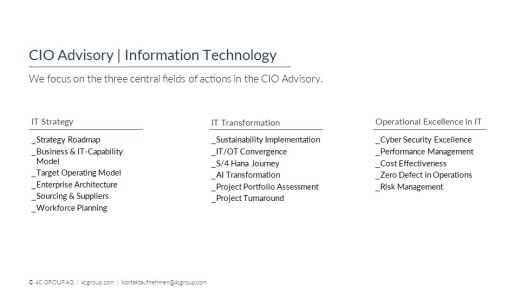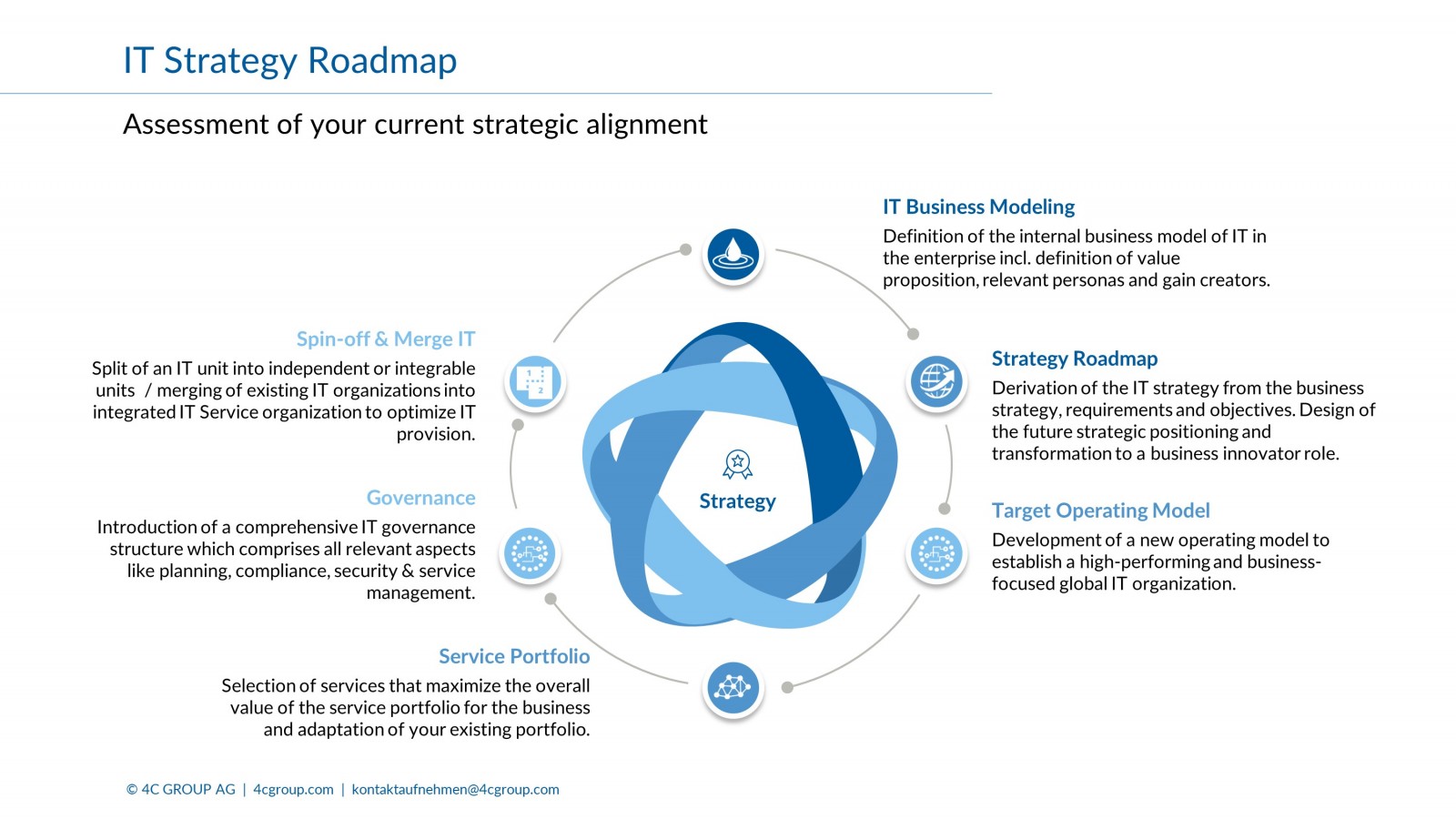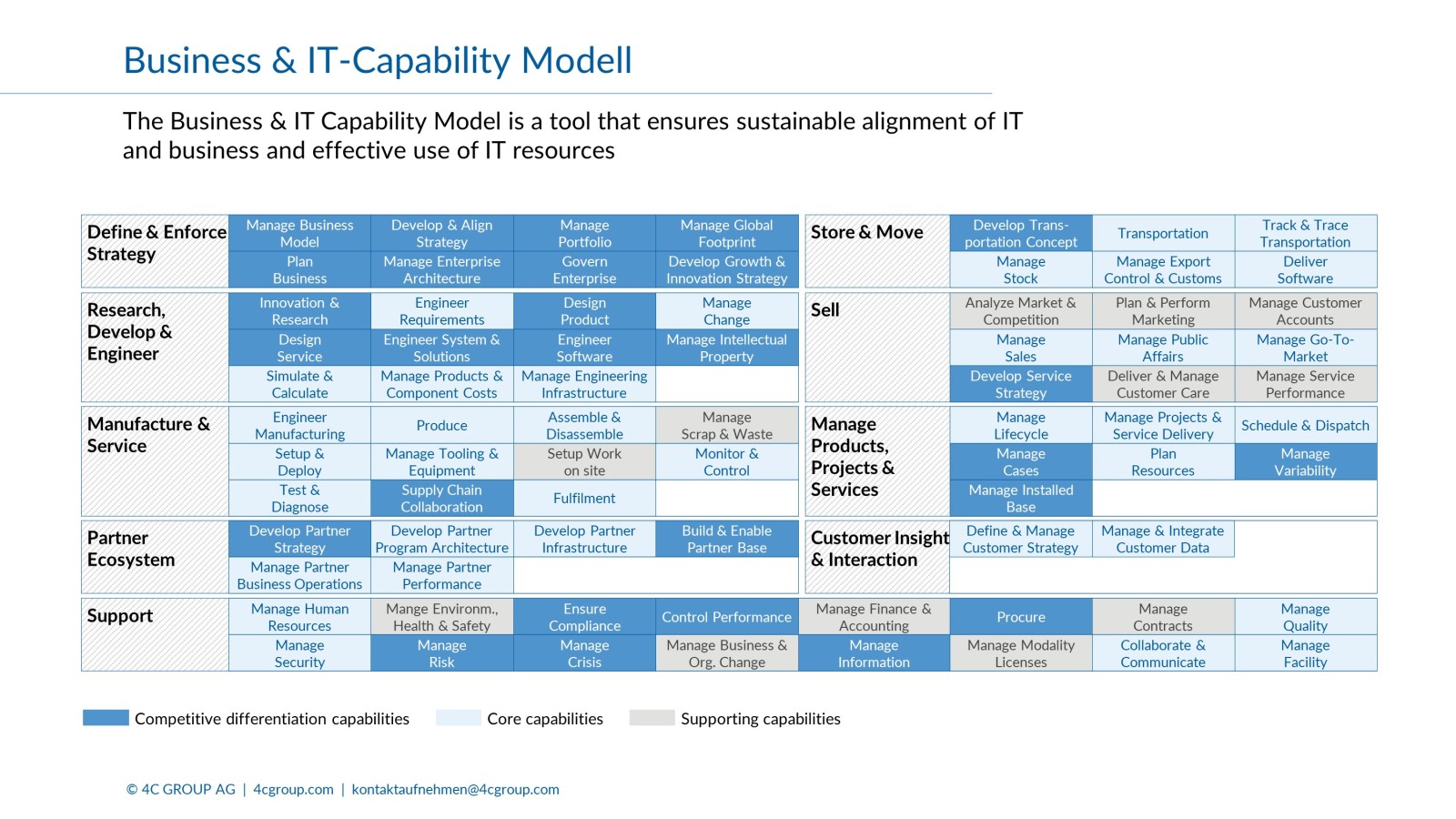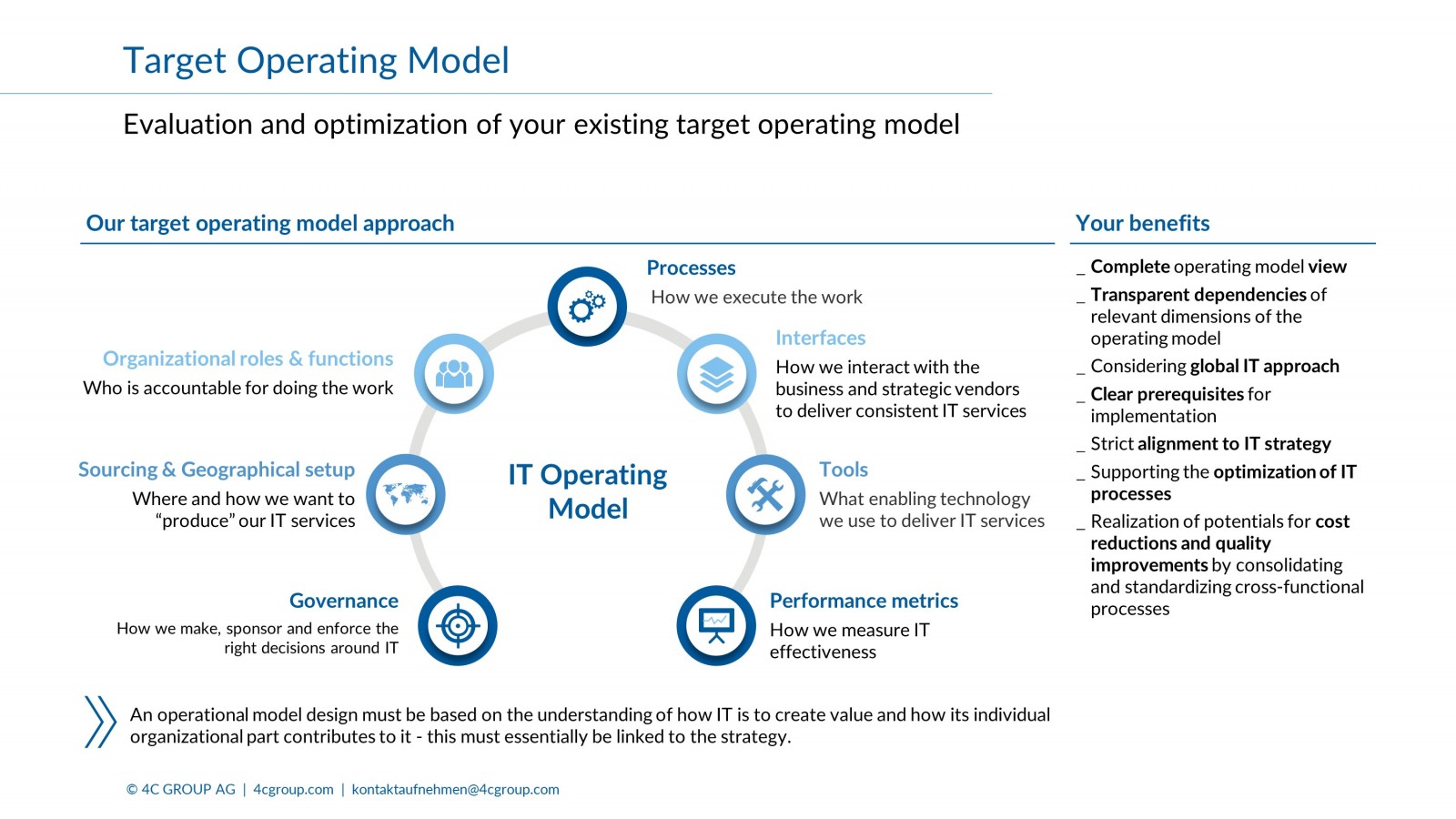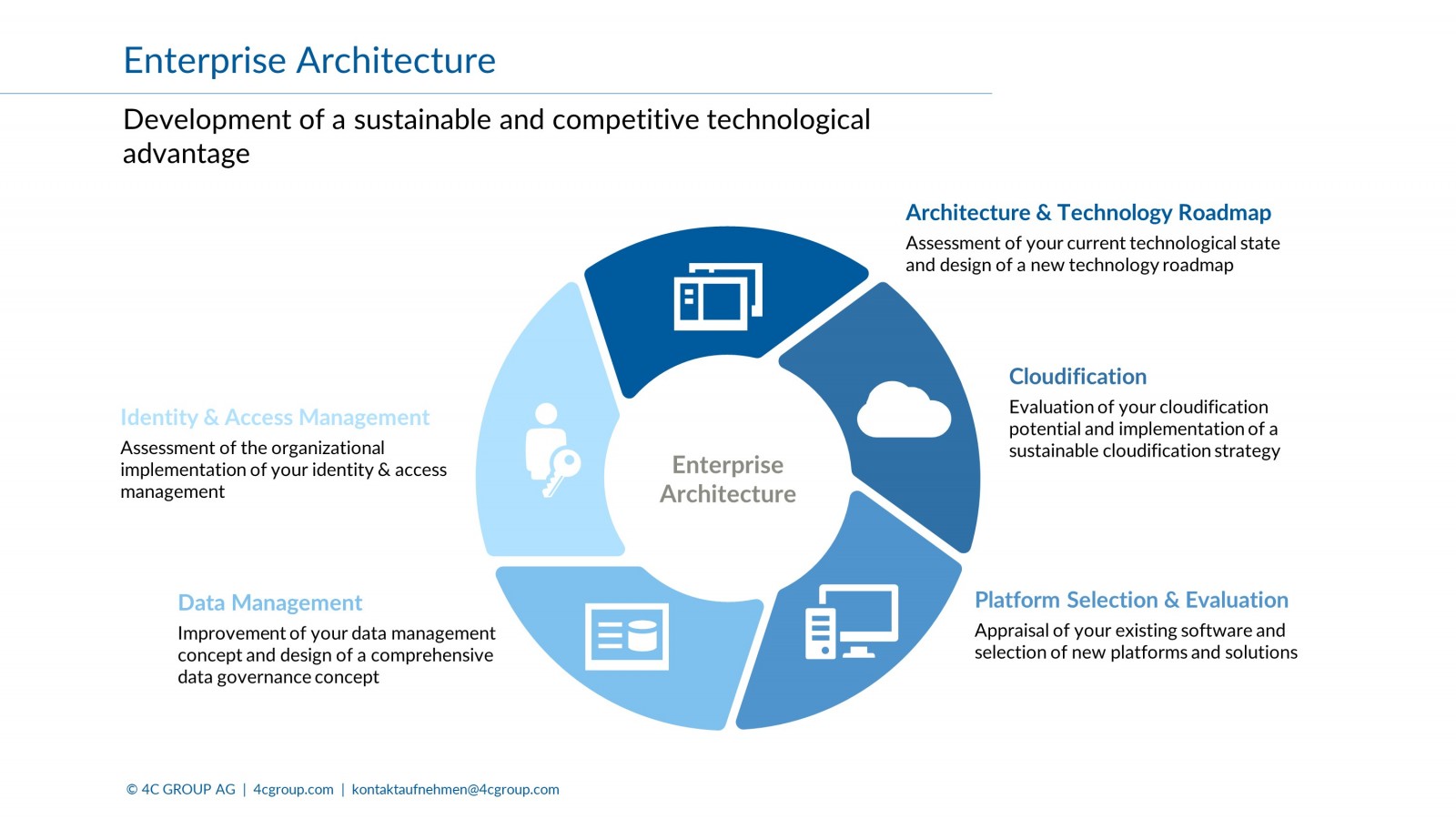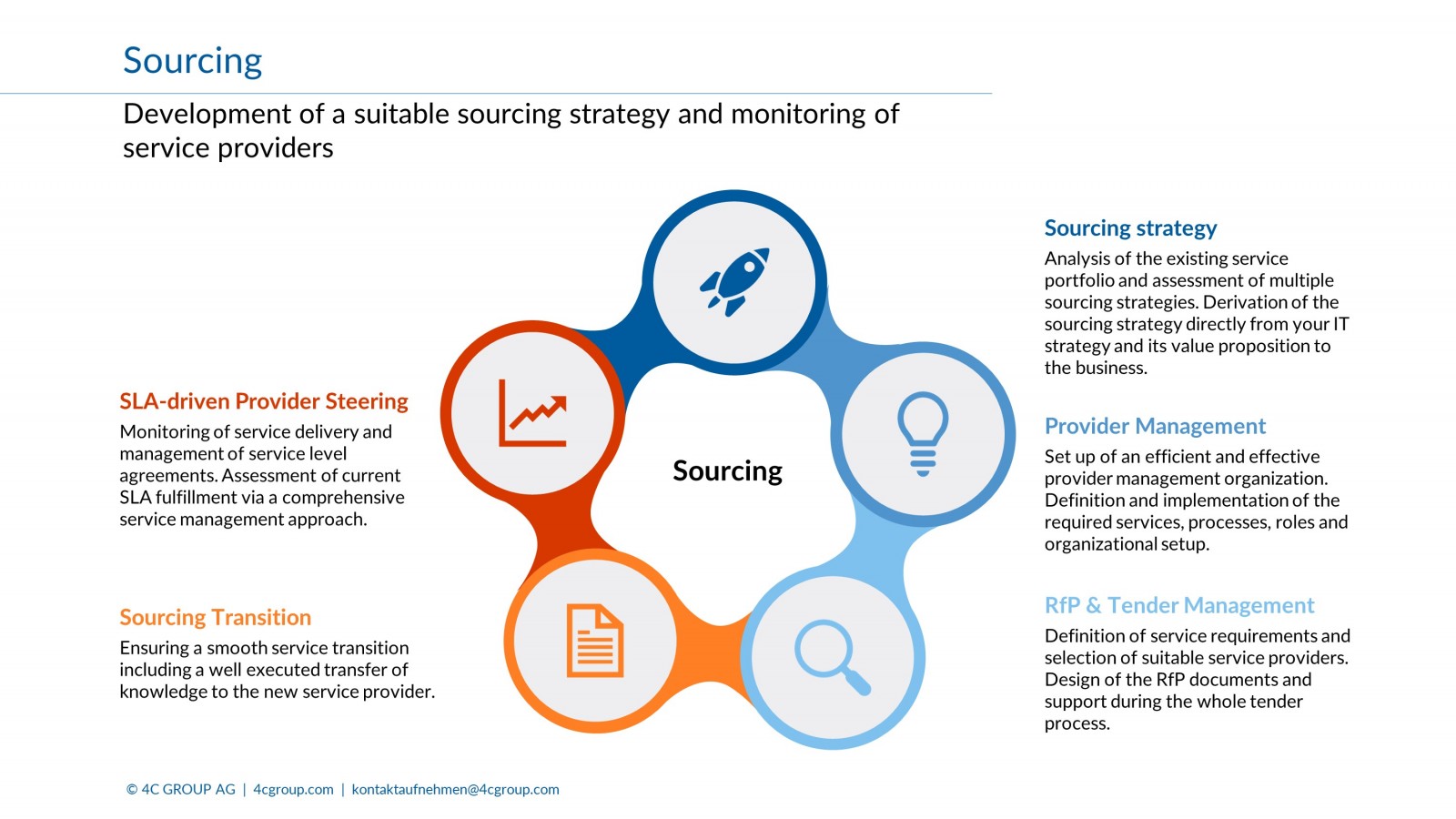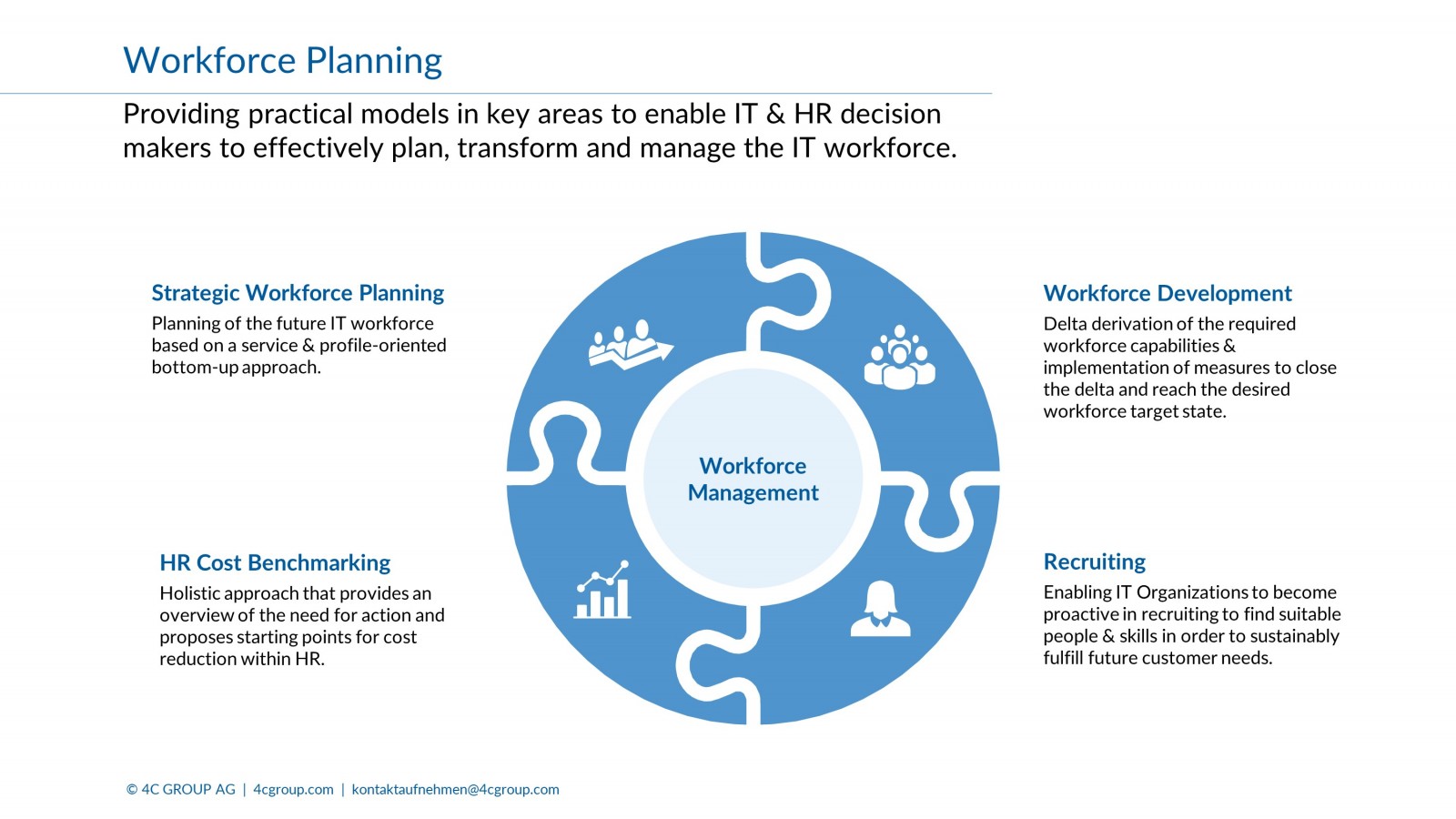The new role of IT: From Service Provider to Strategic Business Partner
The strategic challenges and the self-perception of the IT organization have changed fundamentally. Whereas the IT strategy used to set the direction for IT infrastructure and IT framework conditions, today it defines the IT business model. The development of IT from a pure service provider to a strategic partner of the business has resulted in new strategic challenges. Establishing the new role involves, among other things, technology management across familiar silos, new collaboration models, a new culture, and governance models. At the same time, a flexible and modular architectural foundation must be laid that makes it possible to keep up with the rapid technological development as well as enable new business models for the company flexibly. The changing task portfolio and new technologies require new competencies, so that future-oriented talent scouting and structured employee development are essential success factors for the development of the IT organization. We support you with our expert know-how as well as proven methods and models to master these strategic challenges and to lead your IT organization to sustainable success.
- IT Strategy Roadmap
- Business & IT-Capability Model
- Target Operating Model
- Enterprise Architecture
- IT Sourcing
- Workforce Planning
IT Strategy Roadmap
In a digitized world like today, in which IT services are increasingly an integral part of the business value proposition to external customers, IT not only provides the technology direction, but also plays a significant role in value creation. This value contribution of IT results from business process know-how and an understanding of technology. The IT strategy must therefore define the IT organization's own business model and provide information about the customers for whom services are provided - both internally and externally - and how they are remunerated. Derived from the requirements and goals of your business strategy, the IT strategy roadmap provides the design for the future strategic positioning and transformation of your IT organization into a business innovator role.
Business & IT-Capability Model
The growing importance of IT within business processes also means a different perception of the IT organization in business. The IT organization is increasingly perceived as an important driver of innovation. Against this background, regular strategic coordination between the IT organization and the business is absolutely essential. The goal is to understand in IT which business processes or business capabilities are central, but also which are not central or supportive for the long-term success of the company. Within the framework of business & IT capability modeling, it is possible to compare whether and how the business capabilities are realized by IT services. The final business & IT capability model provides a high level of transparency about the current business-IT alignment and allows strategic decisions to be made for the optimization of the IT service portfolio, such as the development or phasing out of new services. Furthermore, strategic, tactical and operational measures can be derived in the areas of sourcing and workforce management.
Target Operating Model
In the course of globalization and digitization, there are numerous options and models for collaboration and organizational positioning available. But how should the IT organization be structured in order to achieve the strategic goals in the best possible way and to provide the customer with the greatest possible benefit? The Target Operating Model (TOM) helps answering this question precisely and is therefore of vital importance for the successful implementation of the IT strategy in the operational activities of the IT organization. The design of this operating model must be based on a profound understanding of what value really is for the customer and how it is created. Based on an analysis of the current situation, we work with you to determine the organizational structure your IT organization wants to achieve in the future in order to optimally implement your strategy. This includes the definition of necessary processes, technological tools as well as roles and functions with which added value for the customer is created as efficiently as possible and of high quality. For the successful control of IT activities, a suitable control and governance model must also be established in the 'TOM' in order to be able to measure efficiency and support correct decisions in the IT organization.
Enterprise Architecture
The IT organization faces the challenge of mapping the complexity of business processes and keeping pace with the continuous progress of technology and market developments. The impact of technological changes or strategic business decisions on the application, process, data and system landscape must be taken into account. The challenge is to sustainably develop existing IT solutions while maintaining sufficient flexibility for new, innovative IT solutions.
Enterprise Architecture (EA) describes the interrelationships between business processes and IT and thus provides a strategic, conceptual and organizational framework for Enterprise Architecture Management (EAM) as well as the strategic business planning of the IT organization. In order to harmonize your system landscape and align it for the future, we first determine the current status and then work with you to derive the target architecture for a sustainable, innovative and open IT landscape. This forms the basis for strategic decisions with regard to technology deployment and development in the IT organization. By linking IT and business processes, the EAM offers you a holistic approach for efficient control and modernization of the IT landscape with alignment to business requirements.
IT Sourcing
IT sourcing is and remains a core discipline of the IT organization. In this context, IT sourcing should not only be understood as part of procurement. A further focus should be placed explicitly on the management, partnership-based cooperation and further development of service providers and thus on the further development of the operating model, because the long-term success of sourcing projects often suffers from sanction-oriented provider management, insufficient integration into the company's own processes or lack of clarity about the desired vertical range of the manufacture of the company's own services. Successful sourcing is therefore characterized by a structured sourcing process that maps and controls the entire "supplier lifecycle" from the definition of the required services, the cooperation model and control to clear exit agreements and procedures.
We support you in the development of a higher-level sourcing strategy that ensures the long-term alignment of sourcing with the goals and requirements of the business, as well as in the design, implementation and execution of a holistic sourcing process for your IT organization.
Workforce Planning
For a competitive IT organization, in addition to an adequate IT budget for the implementation of important transformation and innovation projects, qualified employees are first and foremost the decisive success factor. Today, IT organizations are struggling with an aging workforce and rapidly changing skill requirements for the workforce. In addition, there is the challenge of asserting themselves on the market as an attractive "employer of choice" in the face of start-ups, Internet and tech companies. Against the backdrop of an increasing shortage of personnel, IT employees must be deployed effectively and in line with requirements on the one hand, and further developed in the long term on the other. This can be achieved with skill-based strategic workforce planning and ongoing and consistent workforce development. In addition, IT organizations should take an active role in developing innovative recruiting approaches to address experienced experts and IT talent in a more targeted manner.
An overview of current top topics
Our experts for IT Strategy
Get in touch with us through Xing or LinkedIn

